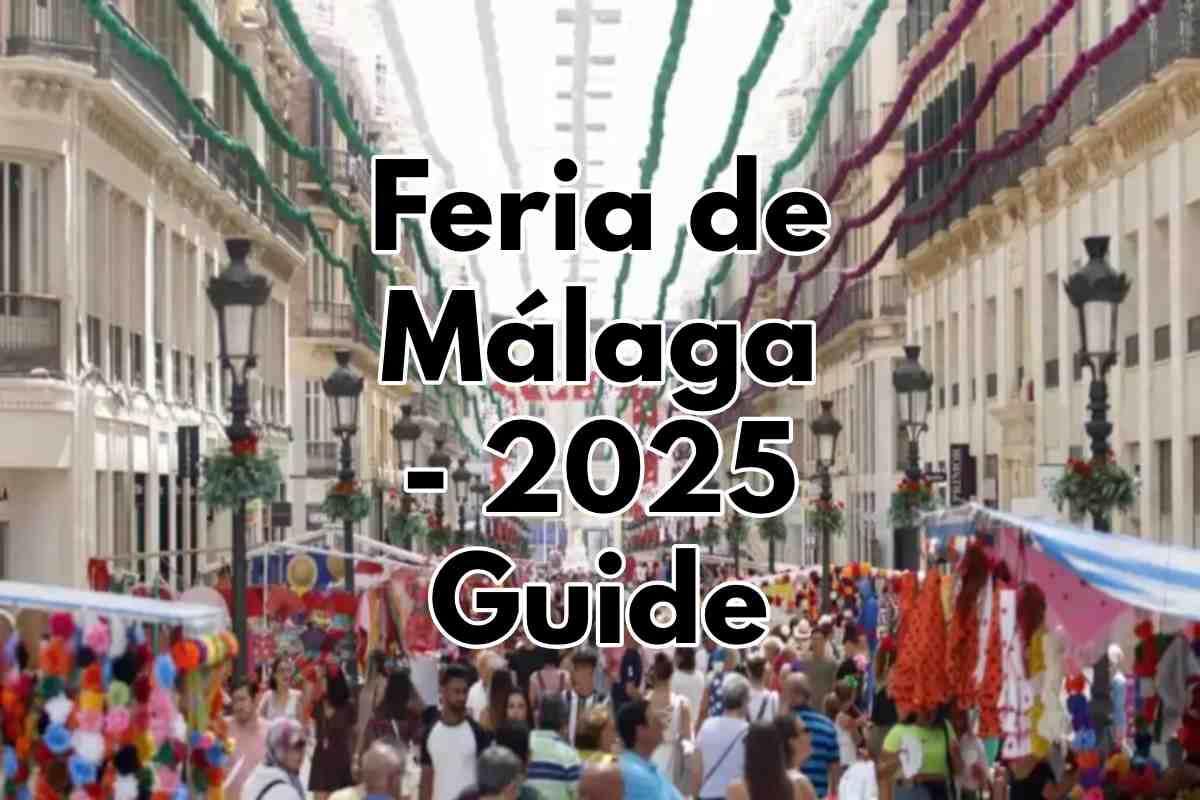Heading to Málaga in August? Discover everything you need to know about Feria de Málaga 2025: history, daily events, local traditions, what to wear, and how to enjoy the city’s biggest celebration.

Each August, Málaga bursts into life with one of the most vibrant and culturally rich festivals in southern Spain: Feria de Málaga. In 2025, the festival will take place from August 16 to 23, and as always, it promises several unforgettable days of music, dancing, food, tradition, and celebration that spreads from the city’s historic center to the fairgrounds on the outskirts.
Whether you’re a visitor experiencing it for the first time or an expat living in Málaga and planning to immerse yourself more deeply, this guide will walk you through the origins of the Feria, what to expect each day, and how to make the most of this high-energy event rooted in centuries of Andalusian culture.
The Origins of Feria de Málaga
The Feria has its roots in 1487, commemorating the entry of the Catholic Monarchs into Málaga after the Reconquista. Originally conceived as a religious and civic holiday to mark this historical moment, the festival has since evolved into a celebration of Málaga’s identity—combining Catholic tradition, Andalusian heritage, and modern festivity.
Over time, the religious undertone has given way to a more inclusive and secular celebration. Today, it is a showcase of southern Spanish culture in all its forms: from flamenco and horse parades to late-night concerts and street parties that continue until dawn.
Two Celebrations in One: Daytime in the City and Nightlife at the Fairgrounds
Feria de Málaga is unique in its dual structure. The city hosts two distinct but connected versions of the festival: the Day Fair (Feria del Centro) and the Night Fair (Feria del Real).
During the day, the historic center transforms into a lively, music-filled street party. The streets around Calle Larios, Plaza de la Constitución, and Calle Granada are closed to traffic and filled with people in traditional dress, live bands playing Sevillanas, and pop-up bars serving cold beer, sweet wine, and rebujito. After sunset, the focus shifts to the Real de la Feria near the Cortijo de Torres district. This area comes alive with casetas—large tents offering food, drinks, and live music—open to the public and often run by local associations, restaurants, or city institutions. You will have the perfect opportunity to try all kinds of local Andalusian specialties.
What to Wear and How to Blend In
Although there is no official dress code, many locals use the Feria as an opportunity to wear traditional Andalusian clothing. Women often wear brightly colored flamenco dresses and flowers in their hair, while men opt for button-down shirts, vests, or even short Andalusian jackets and wide-brimmed hats.
As a expat or tourist, you’re more than welcome to dress up as well. But if you choose to go casual, avoid flip-flops or anything uncomfortable—you’ll be walking and standing a lot, especially in the heat. Light, breathable clothing and comfortable shoes are essential.
Highlights and Events Not to Miss
The festival opens on the evening of August 15 with a massive fireworks display over the port of Málaga. The next day, the fair officially begins with lighting the lantern and parade of horses and carriages making their way through the city center. Each day is filled with smaller events, including musical performances, flamenco shows, and religious offerings to the Virgin of Victory, the city’s patron saint.
On “Día del Niño”, families can enjoy discounts on fairground rides and special programming. This day always falls on the day after the end of the celebrations, which clearly indicates that this year it is August 24th. The final night, August 23rd, traditionally features another open-air concert and a second round of fireworks.
Practical Tips for Enjoying Feria:
– Avoid bringing a car. Traffic is heavy, parking is scarce, and many streets are closed.
– Stay hydrated and eat well. The combination of heat and alcohol can be overwhelming!
– Arrive early in the city center if you want to experience the Day Fair with more space.
– Follow local customs and join the dancing, conversation, and general fun. Assimilate with the locals.
Why Feria de Málaga Matters
For many locals, the Feria is not just a holiday—it’s an expression of identity. It’s where tradition and modernity coexist. You might see a horse-drawn carriage pass a stage playing reggaeton music. You might hear flamenco riffs from a soundcheck followed by techno beats straight from DJ. The Feria reflects Málaga itself: vibrant, diverse, open, and proudly Andalusian.
This is a rare chance to see the city let loose and show its cultural heart in the most unfiltered, generous way possible. Whether you come to see just for a day or you’ll participate whole week, Feria de Málaga is one of those experiences that stays with you long after the music and fireworks fades.
